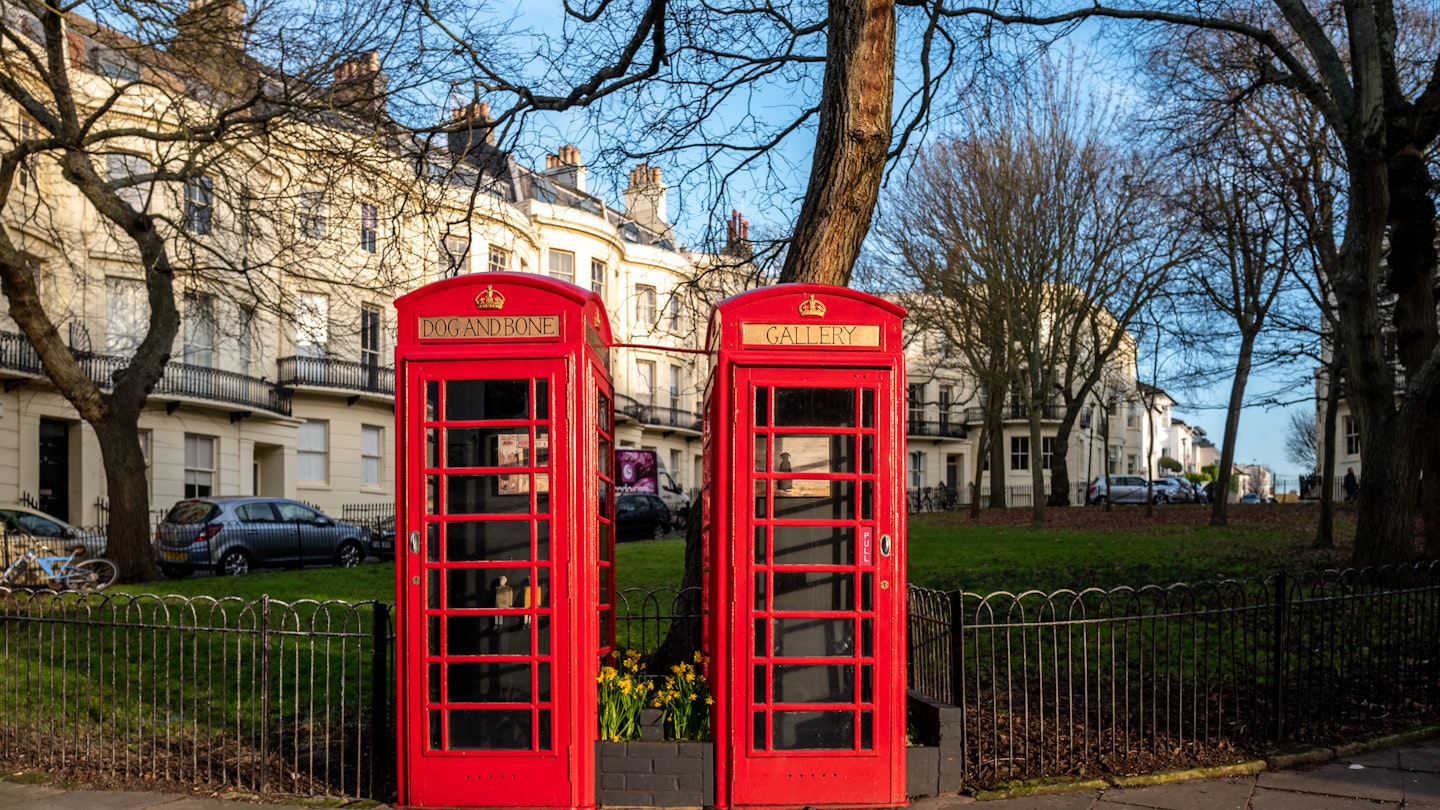Brighton is arguably Britain’s premier seaside town. However, hotspots like the North Laines and the iconic Brighton beach often experience heavy congestion as tourists flock to the area. Therefore, here are a few places to escape the crowds and discover a different side to this vibrant city by the sea.
Dog and Bone Gallery
Two bright red London phone boxes stand rather innocuously side by side on the southwest corner of Powis Sq in the Seven Dials neighbourhood. While you may not notice them initially, a closer look inside reveals Brighton’s smallest gallery space. Featuring a new artist each month, the Dog and Bone Gallery showcases a range of artworks, including sketches, paintings, and photographs. Established by local artist Sam Toft, this quirky gallery is a celebration of the city’s artistic spirit.
Old Police Cells Museum
Located in the basement of Brighton Town Hall, The Old Police Cells Museum presents a unique perspective on the city’s criminal history spanning nearly two centuries. Visitors can peer into the grim cells and learn about notable events, such as the murder of Chief Constable Henry Solomon in 1844. Furthermore, remnants of the mod and rocker era graffiti can still be found on the walls, offering a glimpse into Brighton’s vibrant past.
Madeira Lift
Brighton features several quirky Victorian relics, and Kemptown’s Madeira Lift is a standout from the seaside holiday heyday of the 19th century. Constructed in 1890 to transport visitors from Marine Parade to Madeira Drive, this historic lift continues to operate and is free for public use. Following a significant renovation in 2013, it now offers a modern twist, descending directly into a nightclub.
Victorian Clock Tower Time Ball
At first glance, the old Victorian Clock Tower on North Street appears unremarkable. However, upon closer inspection, you’ll notice a gilded copper sphere known as a time ball located above the clock faces. This hydraulically-operated device was designed by local inventor Magnus Volk, and it serves as one of the few functioning time balls remaining. After being silenced in the late 19th century due to noise complaints, it has since been refurbished and is fully operational once again.
Brighton’s Nudist Beach
Given Brighton’s famously liberal atmosphere, the idea of a nudist beach was initially met with some resistance. Nevertheless, Brighton made history in 1979 by becoming the UK’s first public naturist beach. Nestled between Brighton Pier and Brighton Marina, the beach provides a sheltered environment for those hesitant about shedding their clothes for the first time.
Preston Manor Pet Cemetery
Preston Manor adjacent to Preston Park was once home to Brighton’s Edwardian elite, rumored to host ghostly legends. However, it also has a unique and macabre aspect—an 18th-century walled garden featuring tiny gravestones for four cats and sixteen dogs. This intriguing site is a must-visit for animal lovers, with some gravestones bearing charmingly cute names.
Booth Museum of Natural History
Situated in a quiet neighborhood towards Hove, the Booth Museum of Natural History showcases an impressive collection of preserved specimens. Founded by the eccentric naturalist Edward Thomas Booth in 1874, the museum originally featured stuffed birds displayed in their natural habitats. Today, it has expanded to include over half a million specimens, including insects, butterflies, fossils, and even dinosaur remains. Admission is free, making it an ideal spot for nature enthusiasts.
The Chattri
Unveiled by the Prince of Wales in 1921, the Chattri is a white marble war memorial dedicated to Indian soldiers who served during WWI. Many of these soldiers received medical treatment in makeshift hospitals located in Brighton. The name ‘Chattri’ translates to ‘umbrella’ in Hindi, Punjabi, and Urdu, signifying the memorial’s cultural importance. Nestled on a hill just north of Patcham, it offers serene views of the South Downs, providing a tranquil escape from the city’s bustle.




